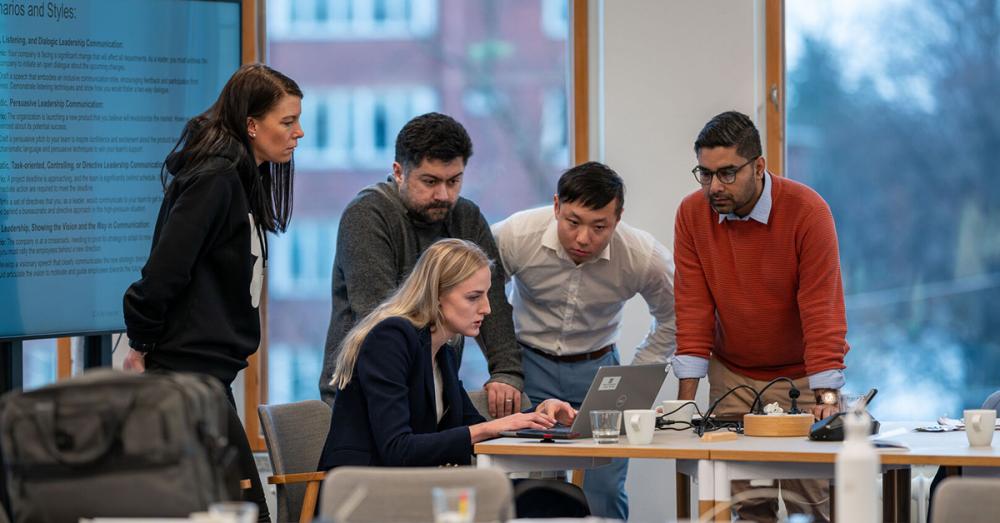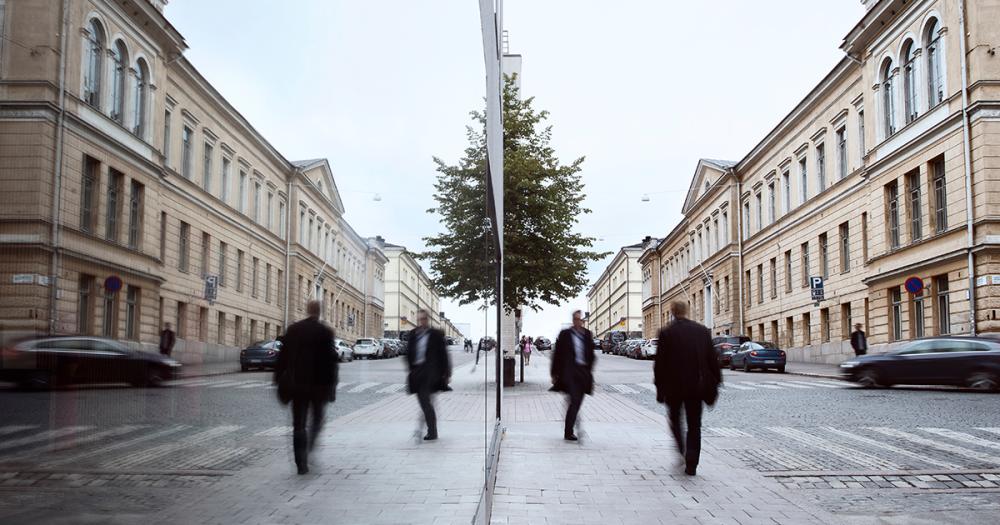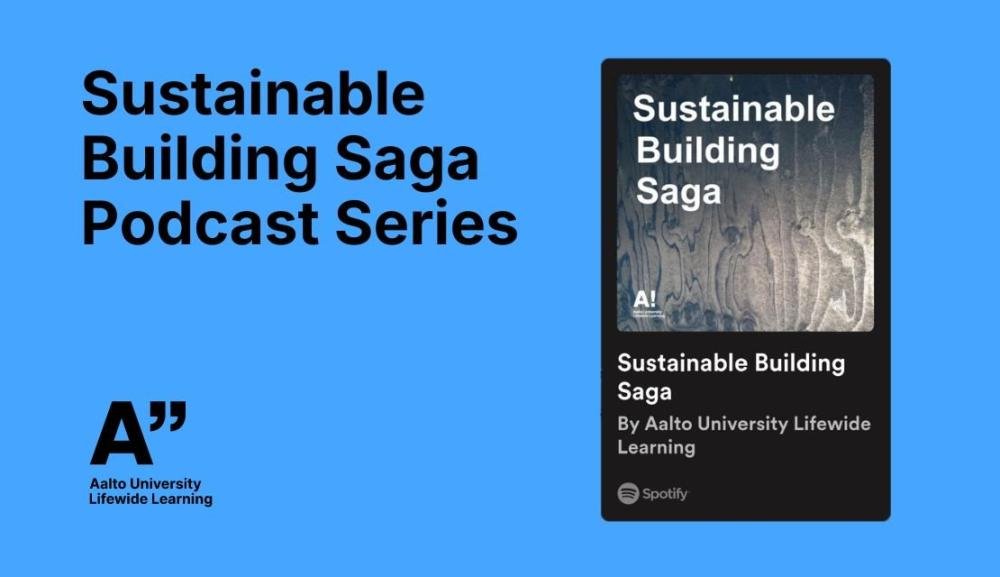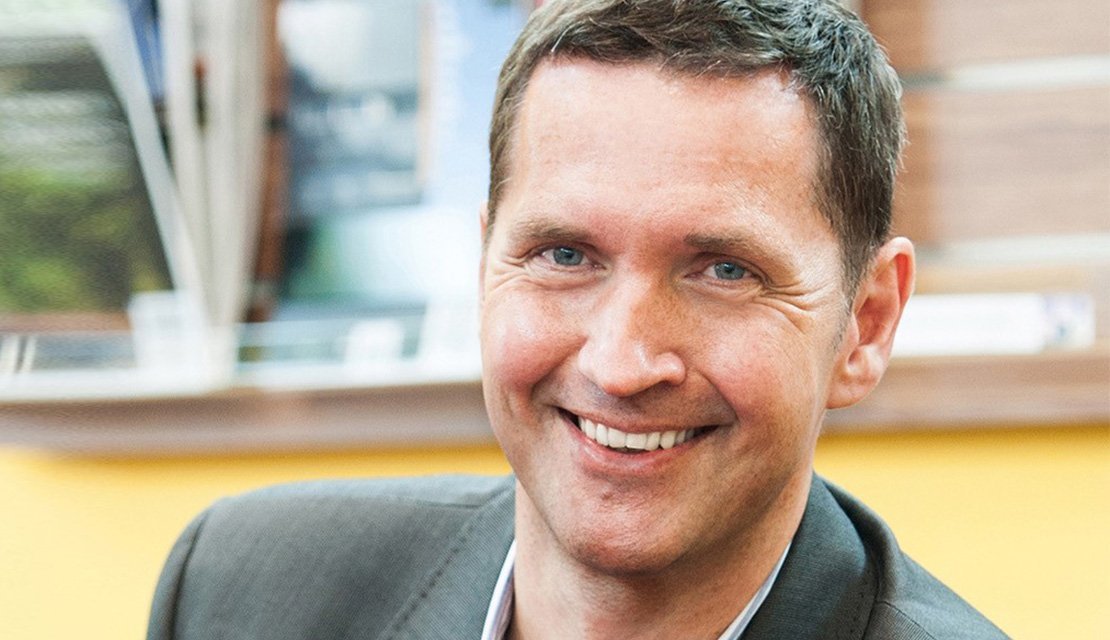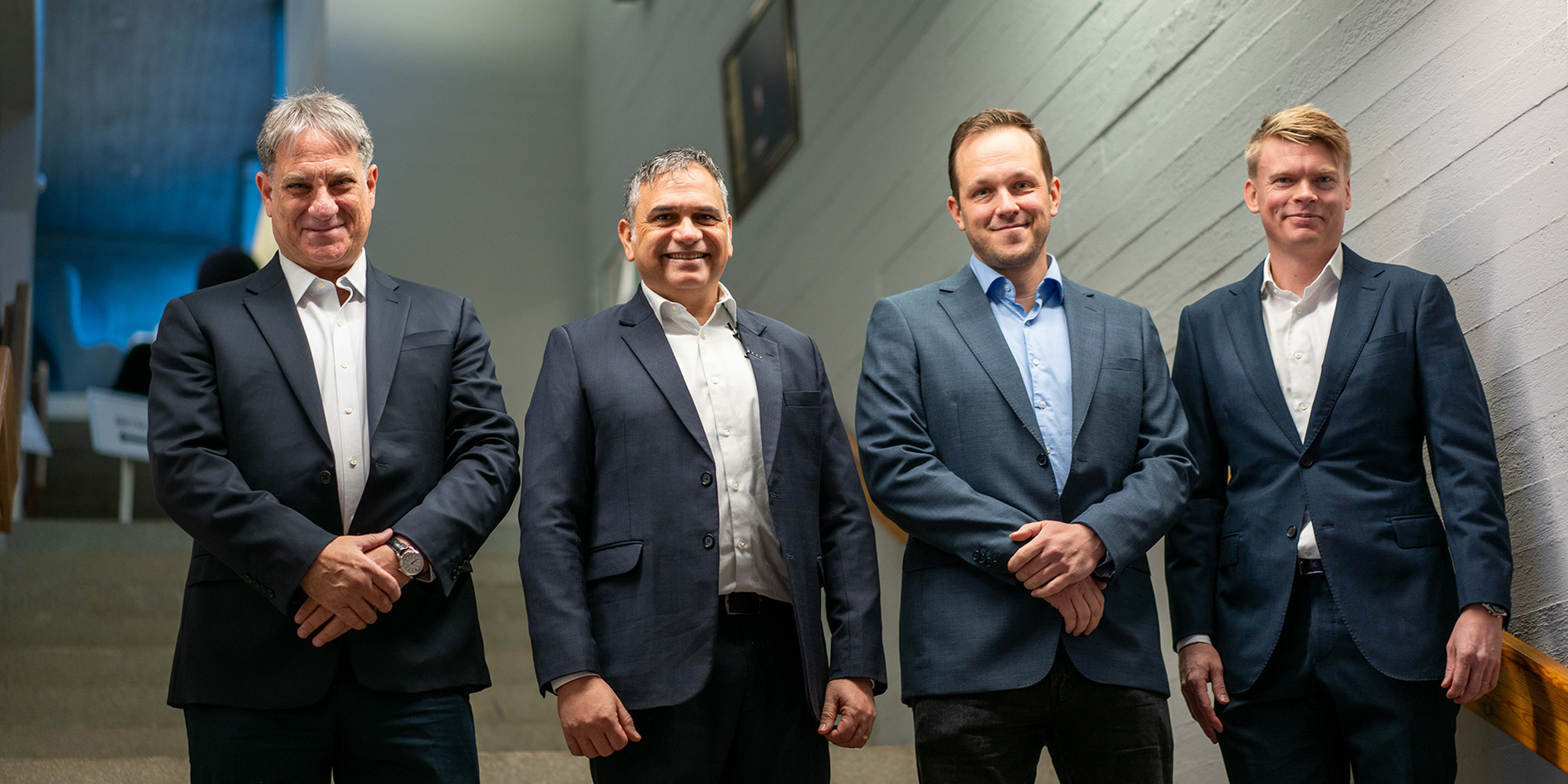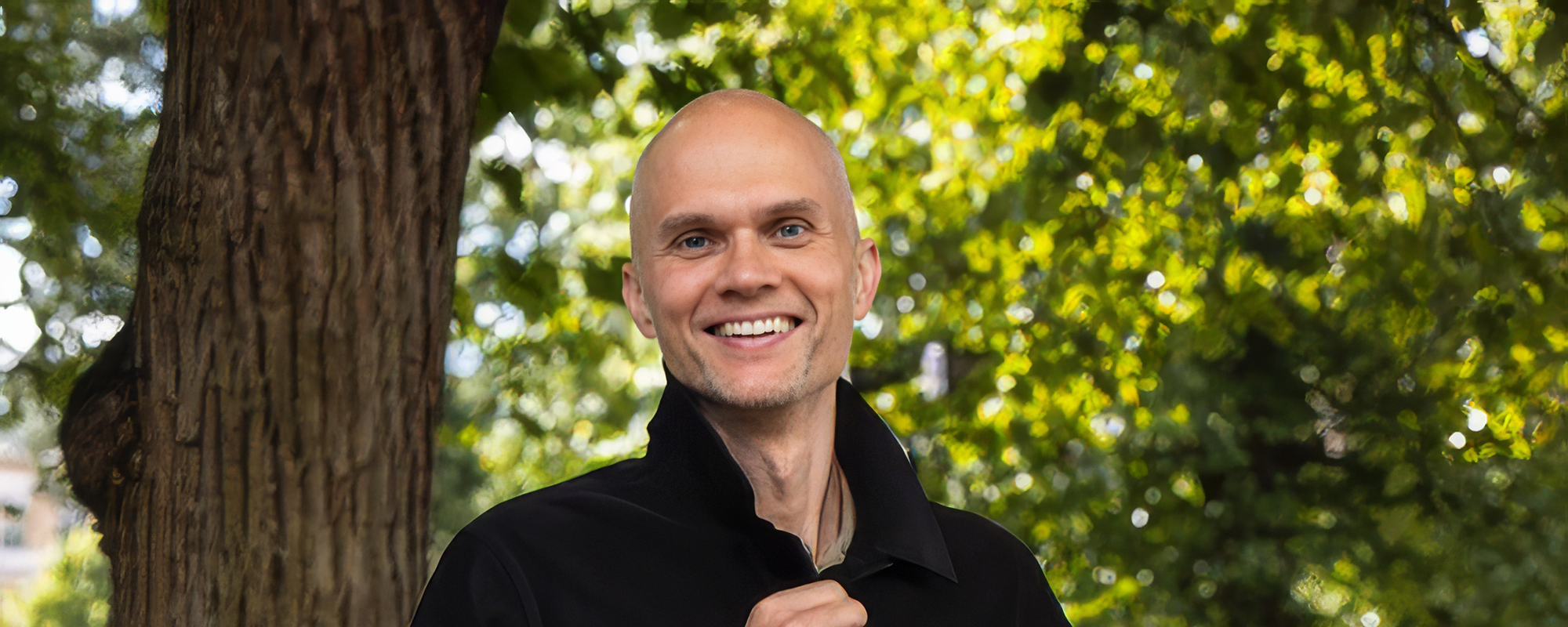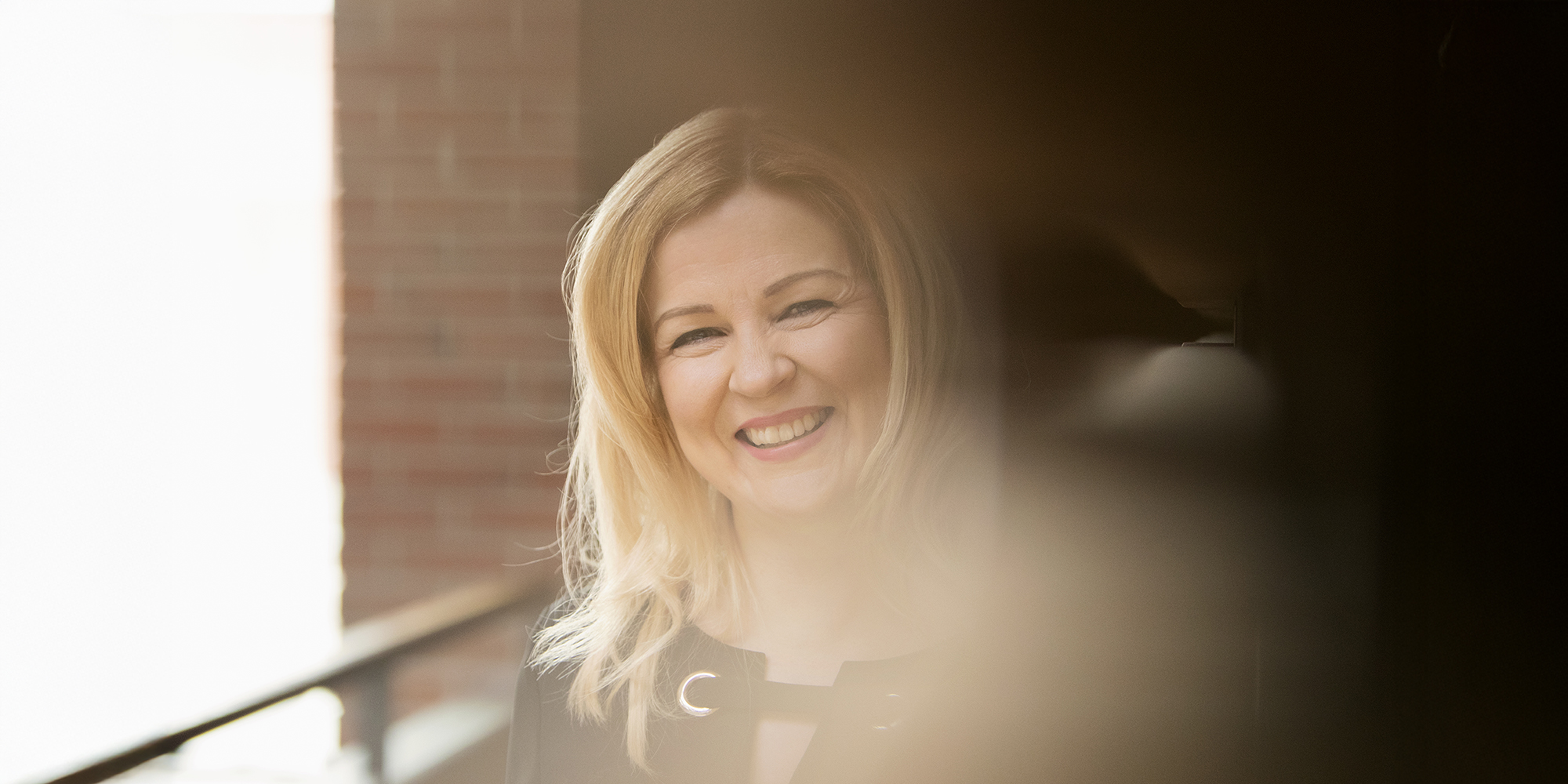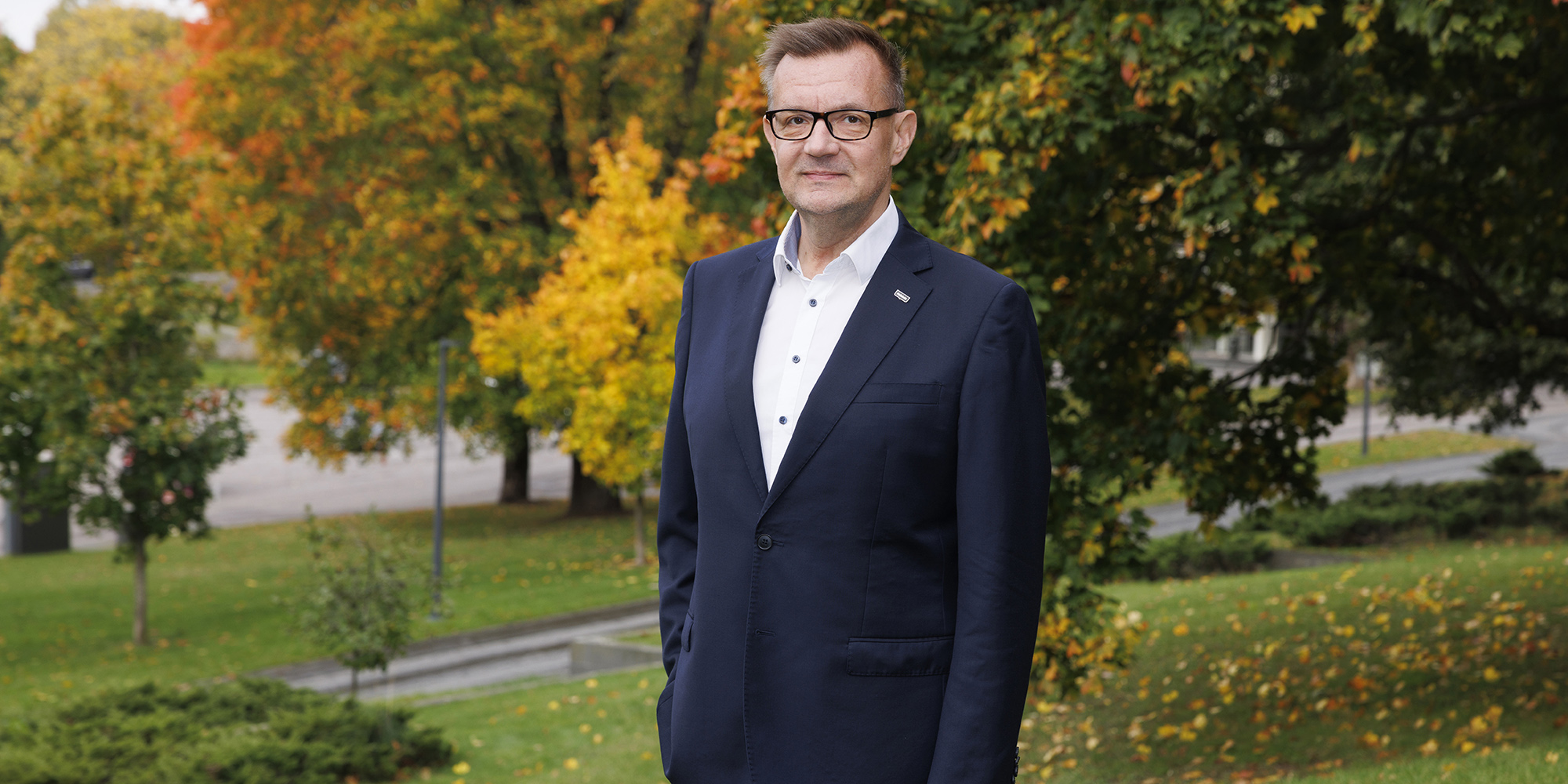Greenery spills over from enormous balconies in apartment buildings, skyscrapers are spotted with large green terraces, a big waterfall has been built in the middle of an airport terminal, and terminal shuttles shoot out from the midst of an abundance of shrubbery and palm trees. Like stepping into a jungle.
Professor Thomas Schroepfer shows architectural images from the densely populated Singapore, which advertises itself as the City in a Garden. The strategy and practices of this city state, with its approximately six million inhabitants and a population density of 8,300 people per square kilometer, are green through and through.
Schroepfer has come to Helsinki to promote denser and greener urban development. He is a member of the Steering Committee and the Core Research Team of the Singapore-ETH Centre Future Cities Laboratory and the Founding Associate Head of Architecture and Sustainable Design at the Singapore University of Technology and Design.
Schroepfer’s images are from actual buildings and built environments, and they immediately take your breath away. Wow! To live in an urban jungle like that!
There is little space left to build and many natural environments are gone. Is that what you want from your future?”
But then Finnish realism sets in. We are talking about Singapore, a tropical city where, as Schroepfer puts it, greenery grows fast. What would all that look like in Finland, a land of long and harsh winters and relatively short and cool summers? Our plants are not exactly the type to spill over. Who would be responsible for the maintenance and costs of green areas in residential buildings? Tricky.
“There is not yet enough pressure for you in the matter”, says Schroepfer, listening to Finns discuss the issue.
“For example, in the Netherlands, the situation is very different. There is little space left to build and many natural environments are gone. Is that what you want from your future?”
Changing the mindset from horizontal to vertical
When cities become increasingly packed, the limits of urban growth will only stretch so far. At the same time, increasing urbanization causes people to long for natural environments.
When there is no more space to build on, choices need to be made. Are we to clear up green areas to create space for new construction or should we build vertically? If we do build vertically, could green areas, such as parks, be located vertically as well?
The Future Cities Laboratory conducts research on the future of sustainable urban design and architecture, focusing on issues related to science and sustainability, design and vibrancy as well as location and its specificities, such as climate.
Increasing urbanization causes people to long for natural environments."
For example, in hot and densely populated cities, green areas can help with cooling and improving air quality. At their best, green roofs and other green construction can be used to collect and filter stormwater.
In terms of sustainable development and climate change, a dense urban structure is preferable to sparseness. In addition, Schroepfer believes density to be an integral part of the character of a city.
“The urban experience calls for density. This is what separates a city from a suburb”, Schroepfer says.
“In a dense urban structure, we are less reliant on transport, there are less cars, and people are attracted by the intensity of the environment. When we favor denser design, we must do so in a way that appeals to people. Doing otherwise would be short-sighted and prevent us from designing good cities.”
The mainstream of the future?
Combining green with dense is not a novelty in urban and architectural design. In fact, as Schroepfer points out, it is also a modernist concept.
Even so, dense and green building in places such as Finland is still a rarity.
Studies show that green environments have many positive effects on people’s lives, and the future, with its issues brought about by climate change, demands us to come up with innovative solutions for urban and architectural design and the functionality of cities.
“People often ask me if these ideas have ever been put into action, and whether they can go somewhere and see it”, Schroepfer says.
The future demands innovative solutions for urban and architectural design and the functionality of cities."
“Why not try it in Finland, make an example. As our research in Singapore has shown, dense and green building is economically viable.”
One possible incentive could be, for example, to lighten the permit process for large-scale construction projects that attract investors if their plans include a large element of green construction.
Incorporating green design as part of construction and planning also increases the attractiveness of buildings and residential areas. This would also increase the revenue obtained from the sales and rental of apartments.
According to Schroepfer, there are already good examples of dense and green design in Europe, including the Bosco Verticale towers in Milan, where some 900 trees have been planted on large balconies, or Vauban in Freiburg, which has developed into a popular car-free district, although no one would have believed this possible when it was planned in the 1990s.
There are currently many ongoing projects combining dense and green design in, for example, London and Paris, and Schroepfer tells us that people from other parts of the world are traveling to Singapore to learn more.
“I believe that dense and green cities will become more common in the future. We just need to find the right solutions for each location and implement them.”
Professor Schroepfer's lecture Dense+Green Cities: Architecture as Urban Ecosystem was part of Aalto EE's YTK:n Pitkä kurssi, which is a professional training program for experts in the field of urban planning.





